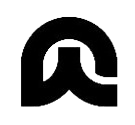ROS Navigation Stack Explained



ROS Navigation Stack Explained: Guiding Your Robot to its Destination
Navigating the world, for a robot, is far more complex than it is for us. While we effortlessly weave through crowds and navigate unfamiliar spaces, robots require sophisticated software to achieve even basic locomotion. This is where the ROS Navigation Stack comes in. This powerful suite of tools within the Robot Operating System (ROS) provides a robust framework for enabling autonomous navigation in mobile robots. Let's delve into its intricacies and understand what makes it tick.
What is the ROS Navigation Stack?
The ROS Navigation Stack isn't a single piece of software but a collection of interconnected nodes and packages working together seamlessly. Its primary goal is to take high-level goals (like "go to point X,Y") and translate them into low-level motor commands that actually move the robot. This involves sophisticated algorithms for path planning, obstacle avoidance, and control.
Think of it as a layered architecture:
-
Top Layer: Global Planner: This component receives the target destination and plans a high-level path, often ignoring minor obstacles. Algorithms like A*, Dijkstra's, or RRT* are frequently employed. The output is a global path, a sequence of waypoints leading to the goal.
-
Middle Layer: Local Planner: This takes the global path and adapts it to the robot's immediate surroundings. It uses sensor data (typically from lidar or cameras) to detect obstacles and dynamically adjust the path, ensuring collision-free navigation. Popular local planners include DWA (Dynamic Window Approach) and TEB (Timed Elastic Band).
-
Bottom Layer: Controller: The controller receives the adjusted path from the local planner and translates it into precise velocity commands for the robot's actuators (wheels, motors). It uses feedback from encoders and IMUs to maintain accurate positioning and adjust for unexpected disturbances.
Beyond these core components, several other vital nodes contribute to the stack's overall functionality:
-
Costmap: A crucial component that represents the robot's environment as a grid, assigning costs to different areas based on the presence of obstacles and other factors. This costmap informs both the global and local planners. Separate layers can represent static obstacles (walls, furniture) and dynamic obstacles (people, moving objects).
-
Transformations: ROS's tf package handles coordinate transformations between different robot frames (base link, map, odom). This is essential for integrating sensor data from various sources and ensuring consistent positioning information.
-
Recovery Behaviors: These are crucial for handling unexpected situations, such as getting stuck or losing localization. Recovery behaviors might involve spinning in place to re-orient, backing up to clear an obstacle, or requesting human intervention.
How the Navigation Stack Works: A Step-by-Step Walkthrough
Let's imagine a scenario: your robot needs to navigate from point A to point B in a cluttered room. Here's a simplified breakdown of the navigation stack's operation:
-
Goal Setting: You provide the desired destination (point B) to the
move_basenode, the central hub of the navigation stack. -
Global Planning: The global planner receives the goal and the current robot pose from the
tfsystem. Using the static costmap, it generates a global path, a sequence of waypoints leading to the goal, ignoring minor obstacles. -
Local Planning: The local planner receives the global path and starts to refine it using the dynamic costmap, which incorporates sensor data about the immediate environment. It considers dynamic obstacles and generates a collision-free trajectory.
-
Control: The controller takes this trajectory and generates velocity commands for the robot's wheels. Feedback from the robot's sensors helps correct minor deviations from the planned trajectory.
-
Feedback Loop: The entire process is a continuous feedback loop. The robot constantly receives sensor data, updates the costmaps, replanning the local trajectory as needed, and adjusting the velocity commands to ensure smooth and obstacle-free navigation.
-
Recovery: If the robot encounters unforeseen challenges (e.g., getting stuck), the recovery behaviors kick in, attempting to resolve the issue autonomously.
Choosing the Right Components: Customization and Flexibility
The beauty of the ROS Navigation Stack lies in its flexibility. You can customize various aspects to fit your specific robot and environment:
-
Planner Selection: You can choose from different global and local planners depending on the robot's capabilities and the environment's complexity.
-
Costmap Configuration: You can tailor the costmap layers to prioritize certain obstacles or adjust the cost function to suit specific needs.
-
Recovery Behavior Design: You can add or modify recovery behaviors to handle unique situations faced by your robot.
Beyond the Basics: Advanced Topics
The ROS Navigation Stack offers many advanced features:
-
Multi-robot coordination: Extensions exist for coordinating multiple robots navigating the same space.
-
Adaptive behavior: The stack can be adapted to learn and improve its navigation over time.
-
Integration with other ROS packages: The stack seamlessly integrates with other ROS packages, allowing for complex functionalities such as object recognition and manipulation.
In conclusion, the ROS Navigation Stack is a powerful and versatile tool that provides a robust framework for autonomous robot navigation. While understanding its complexities might seem daunting at first, the modular design and abundant documentation make it accessible to both beginners and experienced ROS users. By grasping its fundamental principles and mastering its customizable aspects, you can empower your robot with the ability to intelligently navigate its world, opening up countless possibilities for robotics applications.